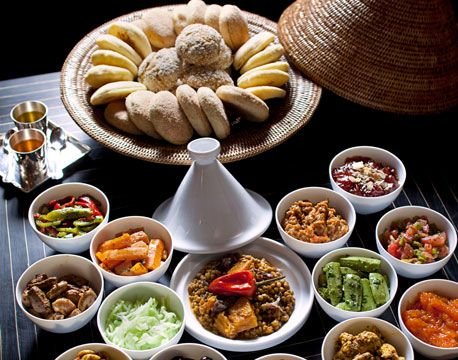Moroccan cuisine
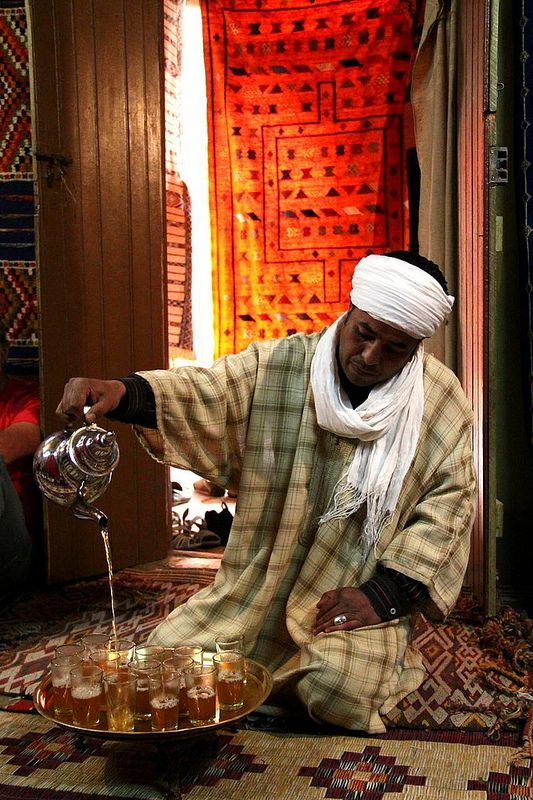
Moroccan cuisine is considered as one of the most diversified cuisines in the world. This is a result of the centuries-long interaction of Morocco with the outside world. The cuisine of Morocco is mainly a fusion of Moorish, European and Mediterranean cuisines. The cuisine of Morocco is essentially Berber cuisine (sometimes referred to as the Moorish cuisine). It is also Influenced by Sephardic cuisine and by the Moriscos when they took refuge in Morocco after the Spanish Reconquista.
Spices are used extensively in Moroccan cuisine. While spices have been imported to Morocco for thousands of years, many ingredients such as saffron from Tiliouine, mint and olives from Meknes, and oranges and lemons from Fez, are home-grown. Chicken is the most widely eaten meat in Morocco. The most commonly eaten red meat in Morocco is beef; lamb is preferred but is relatively expensive. The main Moroccan dish most people are familiar with is couscous, the old national delicacy.
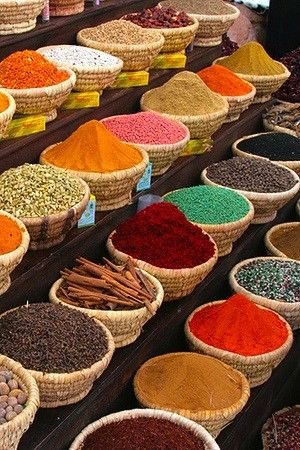
Beef is the most commonly eaten red meat in Morocco, usually eaten in a Tagine with vegetables or legumes. Chicken is also very commonly used in Tagines, knowing that one of the most famous tagine is the Tagine of Chicken, potatoes and olives. Lamb is also consumed, but as North African sheep breeds store most of their fat in their tails, Moroccan lamb does not have the pungent flavour that Western lamb and mutton have. Poultry is also very common, and the use of seafood is increasing in Moroccan food. In addition, there are dried salted meats and salted preserved meats such as kliia/khlia and "gadid" which are used to flavor tagines or used in "el ghraif" a folded savory Moroccan pancake".
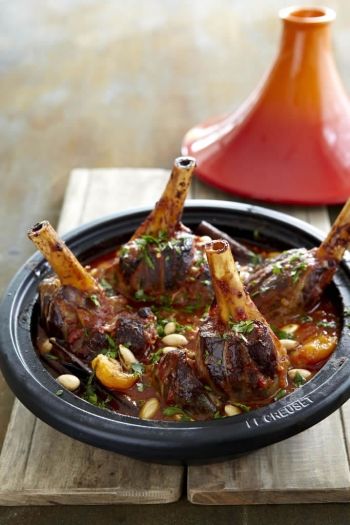
Among the most famous Moroccan dishes are Couscous, Pastilla (also spelled Bsteeya or Bestilla), Tajine, Tanjia and Harira. Although the latter is a soup, it is considered as a dish in itself and is served as such or with dates especially during the month of Ramadan. Pork consumption is forbidden in accordance with Sharia, religious laws of Islam.
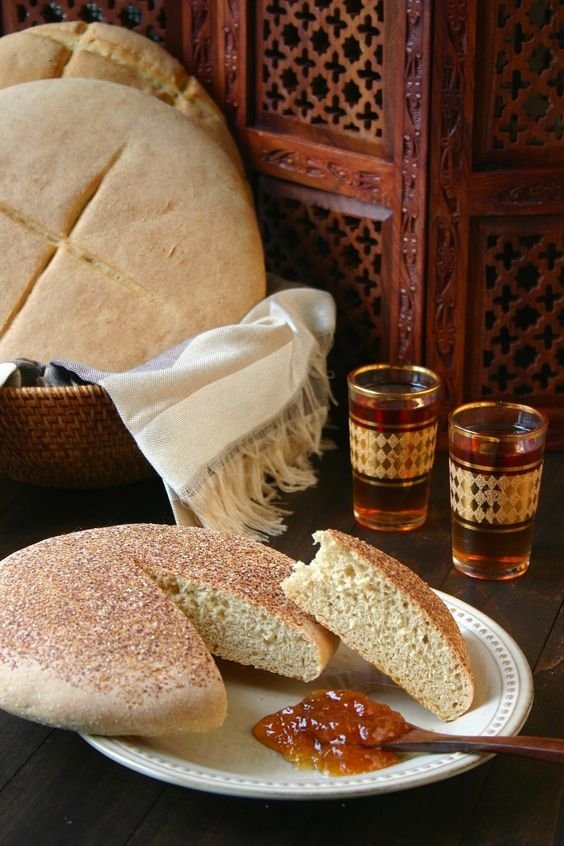
A big part of the daily meal is bread. Bread in Morocco is principally from durum wheat semolina known as khobz. Bakeries are very common throughout Morocco and fresh bread is a staple in every city, town and village. The most common is whole grain coarse ground or white flour bread. There are also a number of flat breads and pulled unleavened pan-fried breads.
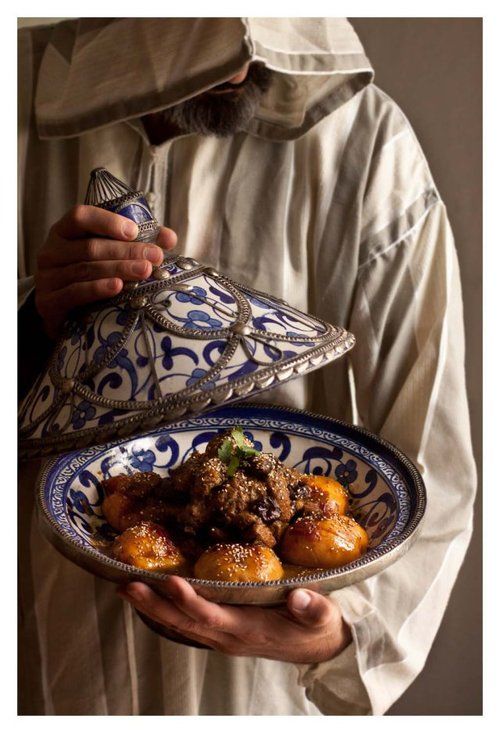
The most popular drink is "atai", green tea with mint leaves and other ingredients. Tea occupies a very important place in the culture of Morocco and is considered an art form. It is served not only at mealtimes but all through the day, and it is especially a drink of hospitality, commonly served whenever there are guests. It is served to guests, and it is impolite to refuse it.
